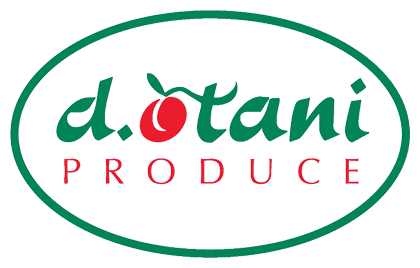When it comes to produce, the sun is definitely beaming down brightly on the Sunshine State with sweet and rosy forecasts for the current fall and upcoming winter seasons.
“After avoiding hurricanes and with decent levels of rainfall, Florida producers remain in good shape as we enter our heavier production months beginning in November and December,” said Karol Molinares, deputy communications director in the Office of Commissioner Nikki Fried, at the Florida Department of Agriculture & Consumer Services in Tallahassee, FL. August and September aggregate production was up 1.74 percent over the last four years. However, September has been more difficult to gauge because the USDA is no longer reporting citrus figures until the end of each quarter, Molinares noted.
 Florida may be best known for its amusement parks, but is an agricultural powerhouse too, with some 47,000 farms and ranches utilizing 9.45 million acres. Florida is first in the United States in the value of production for fresh market snap beans, fresh market cucumbers, cucumbers for processing, grapefruit, oranges, squash, sugarcane and fresh market tomatoes, and second in the value of production for Bell peppers, fresh market cabbage, fresh market sweet corn, strawberries and watermelons. It also ranks fourth in the value of production of peanuts.
Florida may be best known for its amusement parks, but is an agricultural powerhouse too, with some 47,000 farms and ranches utilizing 9.45 million acres. Florida is first in the United States in the value of production for fresh market snap beans, fresh market cucumbers, cucumbers for processing, grapefruit, oranges, squash, sugarcane and fresh market tomatoes, and second in the value of production for Bell peppers, fresh market cabbage, fresh market sweet corn, strawberries and watermelons. It also ranks fourth in the value of production of peanuts.
In 2017, Florida accounted for 56 percent of the total value for oranges ($1.07 billion); 54 percent for grapefruit ($136 million); 38 percent for processing cucumbers ($97 million); 34 percent for fresh market tomatoes ($262 million), and 32 percent for fresh market Bell peppers ($206 million).
Regarding citrus, the USDA currently is estimating the state’s citrus production at 74 million boxes. “This is an exceptional rebound from our production in 2017-18 of 45.1 million, which experienced significant Hurricane Irma damage that fall. This is also up 3 percent from last year (2018-19),” Molinares said.
In 2017, 24,400 acres were planted for snap beans; 8,000 acres for cabbage; 41,700 acres for sweet corn; 26,000 acres for cucumbers; 13,500 acres for bell peppers; 5,900 acres for squash; 29,000 acres for tomatoes; 10,800 acres for strawberries, and 20,000 acres for watermelons.
“Florida continues to maintain a strong agricultural position as our farmers provide fall and winter fruits and vegetables to the U.S. During those months Florida faces intense competition from Mexico throughout most of our production months,” Molinares said.
“One of commissioner Fried’s priorities has been the protection of our specialty crop producers,” Molinares said. “She has been very vocal about USMCA’s potential affects on the industry and the need to have additional trade protections for fresh seasonal produce. We’ve discussed the need for these protections to the Florida Congressional Delegation, sent a letter to Ambassador Robert Lightizer, provided written congressional testimony, and authored op-eds on the topic.”
The state also continues to provide extensive direct and indirect promotional support for its agricultural producers to enhance sales and awareness.
“Retail campaigns are a central component which include more than 80 specialized campaigns annually with thousands of individual targeted events,” Molinares said. “These are highest in the fall, winter and spring and include 70 retail partners, representing more than 10,000 retail outlets worldwide in 25 countries and territories.
“Marketers carefully design our Fresh From Florida promotional operations to deliver a consistent array of support throughout the production cycle,” Molinares continued. “Combined, these operations enhance consumer awareness, which reached a historic high in 2019 of 84 percent, as well as increasing sales by an estimated $137 million in 2018-19.”
The campaign incorporates a strong multi-media consumer advertising operation which has been enhanced to directly engage with customers. Components include an array of digital, television, print, influencers and grocery store advertisements which are designed to designed to optimize connectivity between customers and the numerous FFF products.
Fresh From Florida has many promotions planned for the late winter and spring commodities, Molinares said. They include social media efforts, digital ads on recipe websites, targeted online messaging, influencers, digital coupons such as Ibotta, Mobile Fuse advertising, television advertising on HULU and OTT, circular ad incentives, grocery cart ads, food service programs and in-store commodity sampling events.
“When retailers place items on ad, sales can increase 50 - 300 percent. We coordinate the advertising to coincide with grocery cart advertising and store signage. We also continue to use social media advertising to raise awareness that certain commodities are ‘available now’ in retail markets,” Molinares said.
Florida’s farmers have their sights set on new commodities to further diversify.
“Peaches continues to be a relatively new commodity emerging in just the last few years as a commercially viable Florida product,” Molinares said. “From just 2012 to 2017, the USDA Ag Census reported an expansion of 17 percent in producing acres, from 776 to 904. Florida retail campaigns have included Fresh Florida peaches in several chains in the U.S., as well as in areas in Canada.”
And another new crop is about to take root — hemp.
“The Department and the USDA have both released hemp industry rules that will set the stage for product production,” Molinares said.

